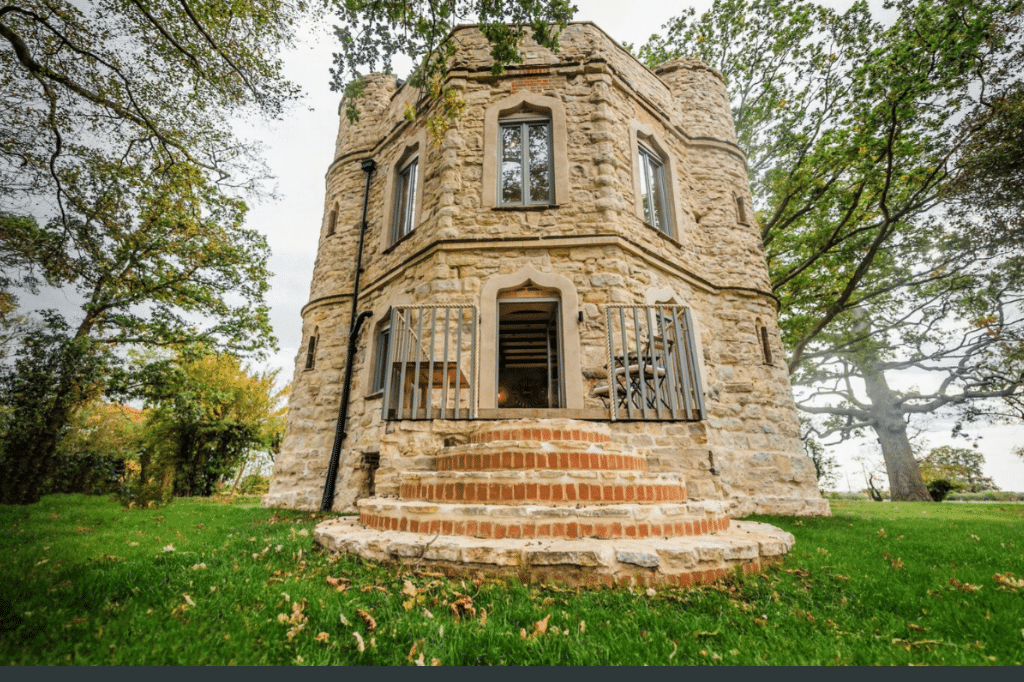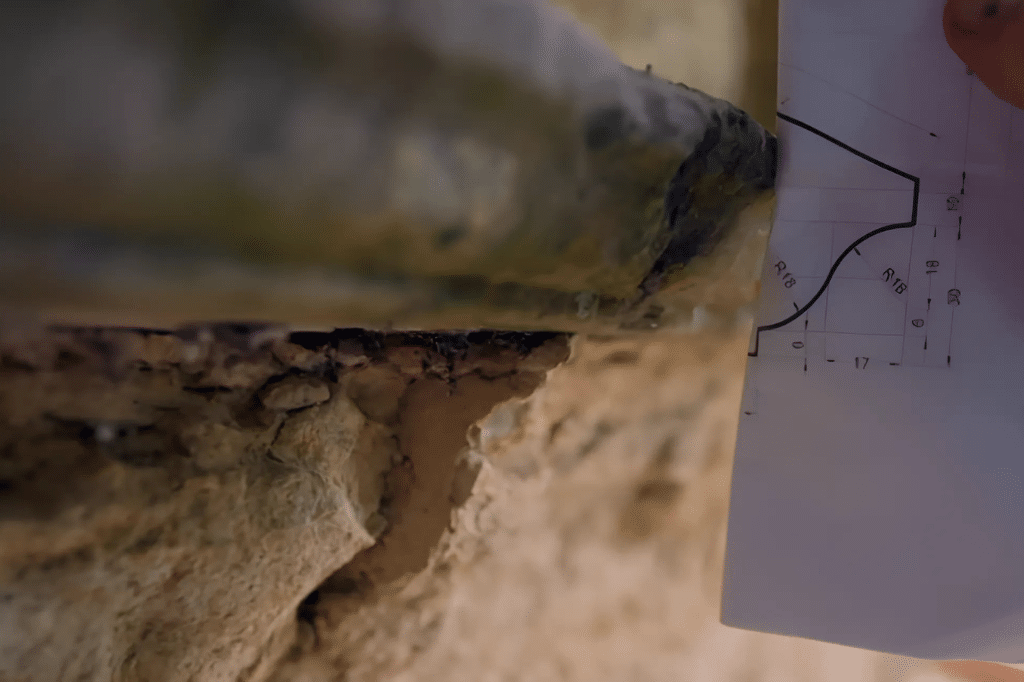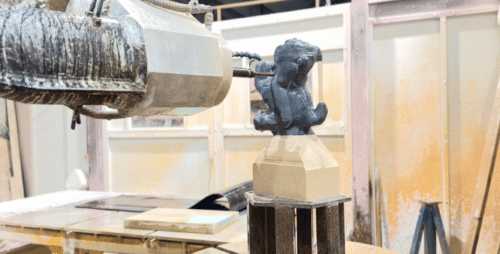Dinton Castle, also known as Dinton Folly, is a distinctive 18th-century Grade II listed building located just north of the village of Dinton in Buckinghamshire. Built in 1769 by Sir John Vanhatten, the castle was originally intended as an eye-catching folly to display his collection of fossils, notably ammonites embedded in the limestone walls. Over the centuries, the structure fell into disrepair, remaining a ruin for nearly 200 years. In 2016, Spanish architect Jaime Fernandez and his wife Mimi undertook the ambitious project of restoring the castle into a modern, comfortable home—a journey that was featured on Channel 4’s Grand Designs with Kevin McCloud.

Our Role in the Renovation
Stoneworld was proud to supply bespoke natural stone elements for this unique renovation. We worked closely with the homeowners to create custom pieces that respected the heritage of the building while delivering high performance and longevity. Every piece was carefully crafted in our Oxfordshire workshop, then delivered for installation on-site.
Key features we supported included custom-cut stonework for interior details and flooring, helping preserve the building’s character while giving it the feel of a modern home.

From Ruin to Icon
This wasn’t just a standard restoration. The transformation of Dinton Castle inspired thousands across the country and beyond. It wasn’t long before the property went viral online, appearing in major press coverage and attracting interest from architecture fans, influencers, and even celebrities.
One example is YouTuber Calfreezy, who toured the castle for his channel — highlighting just how much the building had captured people’s imaginations. The episode of Grand Designs sparked a wave of public interest, with viewers fascinated by how a crumbling folly could become a functional and beautiful home.
Dinton Castle quickly became one of the most talked-about Grand Designs projects to date.
Restoring with Precision
The project involved far more than just adding walls and a roof. The team behind Dinton Castle used laser scanning and CNC-cut stonework to create custom features like an asymmetrical helicoidal staircase that fits inside one of the towers. No two parts were the same — meaning everything needed to be digitally modelled and perfectly made.
It’s a great example of traditional materials meeting innovative building methods.

Dinton Castle: Still Turning Heads
Since its appearance on Grand Designs, Dinton Castle has remained a point of interest — not just for its unique design and restoration journey, but also for its status on the property market. The castle has been sold, listed again, and discussed widely across various platforms.
With the original Dinton Castle sold price drawing attention and mentions on sites like Rightmove, it’s a property that continues to generate conversation. Whether you’re following the Dinton Castle sale, curious about its sold history, or simply captivated by the story of this historic renovation, it’s clear that Dinton Folly continues to fascinate.

Thinking About Your Own Restoration Project?
Dinton Castle is more than just a renovation — it’s a project that sparked ideas, inspired homebuilders, and proved what’s possible with the right vision and the right materials. Stoneworld is proud to have played a role in this now-iconic transformation.
If you’re restoring a forgotten building or adding bespoke details to something new, we’re here to help. We work closely with homeowners, designers, and architects to bring their ideas to life using carefully crafted natural stone.
Please feel free to contact us with any enquiries — we’re always happy to help.








